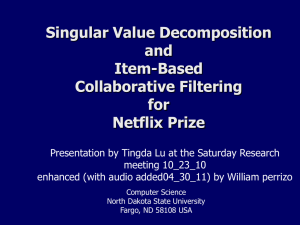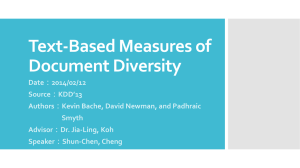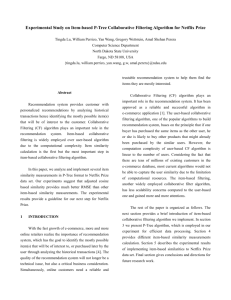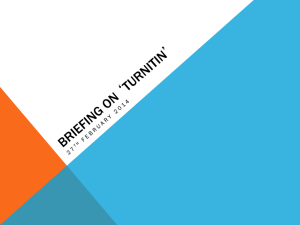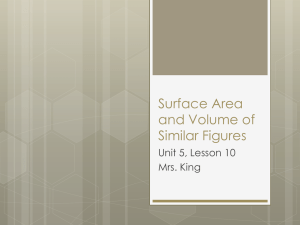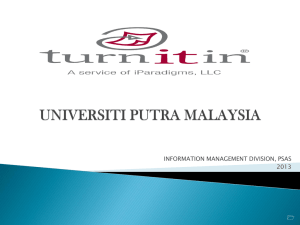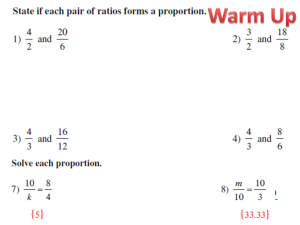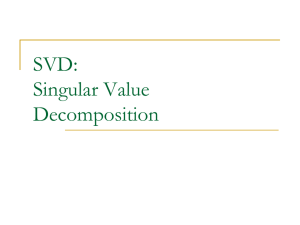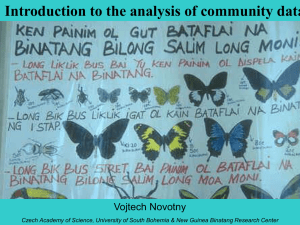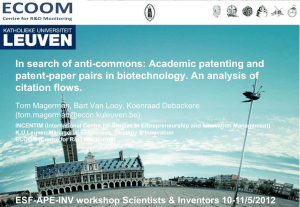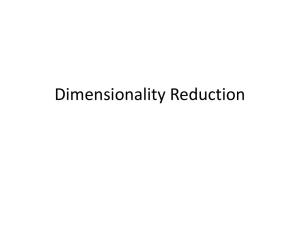10_23_10_svd and item similarity
advertisement
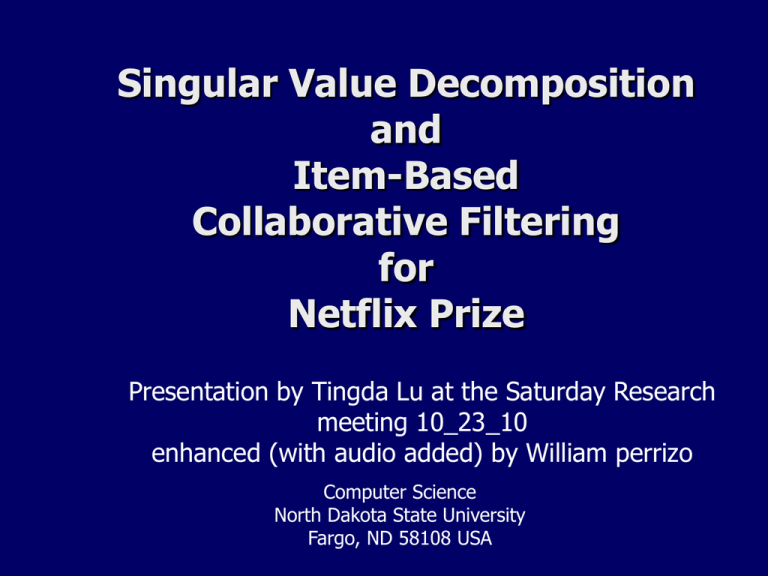
Singular Value Decomposition
and
Item-Based
Collaborative Filtering
for
Netflix Prize
Presentation by Tingda Lu at the Saturday Research
meeting 10_23_10
enhanced (with audio added) by William perrizo
Computer Science
North Dakota State University
Fargo, ND 58108 USA
Agenda
Recommendation System
Singular Value Decomposition
analyzes
customer’s purchase history
Item-based P-Tree CF algorithm
identifies
customer’s preference
Similarity measurements
recommends
most likely purchases
Experimental results
increases
customer satisfaction
leads to business success
SVD
amazon.com and Netflix
SVD is an important factorization of a
rectangular real or matrix, with apps in
signal processing and statistics
SVD proposed in Netflix by Simon Funk
SVD, mathematically, looks nothing like
this but engineers, over many years
have boiled the technique down into
very simple versions (such as this one)
for their quick and effective use
SVD
User’s rate movies with user preferences about various features of
the movie.
What about
creatingcan
andbeoptimizing
backthem to be (or nothing!
Features
anything (with
you want
propagation)
a custom
matrix for each
randomly
constructed!).
features -->
prediction
we
have
to
make?
i.e.,
in
movie In fact, it is typical to start with a fix number of meaningless features
vote.C or user-vote.C.
populated with random values, then back propagate to "improve"
The call from
mpp-user-C
to some
e.g., movie-vote.C
those
values until
satisfaction level is reached (in terms of the
sends M,U,supM,supU.
RMSE). This back propagation is identical to that of the back prop of
Neural Networks.
*** In movie-vote
[or user-vote] before
entering nested
(outer
VoterLoop,
Tingdaloop
found
30 features
tooinner
small and 100 right (200 was too time
movies -->
T
DimLoop), consuming).
train optimal V and N matrixes for
that vote
only (so number of features could be
Arijit: Go to Netflix site for feature ideas (meaningful features ought
raised substantially
since [pruned] supM and
to be better?)
supU are << 17,000 and 500,000).
users -->
features -->
Collaborative
sim is any simmilarity function. The only req. is
/* Movie-based PTree CF*/
Filtering (CF) alg
that sim(i.i) >= sim(i,j). In movie-vote.C one
SVD
training
is widely used in
could backpropagate train VT and N (see *** on
PTree.load_binary();
recommendation
Parameters: learning rate and lambda previous slide) anew for each call from mpp-user.C
systems
to movie-vote.C and thereby allow a large number
// Calculate
similarity
Tune the parameters
tothe
minimize
errorof features (much higher accuracy?) because VT
User-based CF
algorithm is
limited because
of its
computation
complexity
Movie-based
(Item-based) CF
has less
scalability
concerns
while i in I {
and N are much smaller than UT and M
while j in I {
simi,j = sim(PTree[i], Ptree[j]);
}
}
// Get the top K nearest neighbors to item i
pt=Ptree.get_items(u);
sort(pt.begin(), pt.end(), simi,pt.get_index());
// Prediction of rating on item i by user u
sum = 0.0, weight = 0.0;
for (j=0; j<K; ++j) {
sum += ru,pt[j] * simi,pt[j];
weight += simi,pt[j];
}
pred = sum/weight
Here Closed Nearest Neighbor
methods should improve the
result! If the similarity is
simple enough to allow the
calculation through PTrees,
then closed K Nearest
Neighbor will be both faster
and more accurate.
Similarities
Adjusted Cosine
(correlations)
Cosine based
SVD item-feature or Tingda Lu similarity?
Pearson correlation
or combining Pearson and Adj Cosine:
*
i
i
j
j
\ RMSE
Neighbor Size
Cosine
Pearson
Adj. Cos
SVD IF
1.0742
1.0092
0.9786
0.9865
K=20
1.0629
1.0006
0.9685
0.9900
K=30
1.0602
1.0019
0.9666
0.9972
Two items are not similar if only a few customers purchased or rated both
K=40
1.0592
1.0043
0.9960
Co-support is included in item similarity
1.0031
Similarity CorrectionK=10
Prediction
Weighted Average
Item Effects
K=50
1.0589
1.0064
0.9658
Adj Cosine similarity gets much lower RMSE
The reason lies in the fact that other algorithms do not exclude the user rating variance
Adjusted Cosine algorithm discards the user variance hence gets better prediction accuracy
1.0078
Cosine
Pearson
Adj. Cos
SVD IF
Similarity Correction
After
1.0589
1.0006
0.9658
0.9865
1.0588
0.9726
1.0637
0.9791
Improve
0.009%
2.798%
-10.137%
0.750%
Before
All algorithms get better RMSE with similarity correction except Adjusted
Item Effects Cosine.
Cosine
Pearson
Adj. Cos
SVD IF
Improvements for all algorithms.
1.0589
1.0006
0.9658
0.9865
Individual’s behavior influenced by others. Before
After
0.95750
0.9450
0.9468
0.9381
Improve
9.576%
5.557%
1.967%
4.906%
Conclusion
Experiments were carried out on Cosine, Pearson, Adjusted Cosine and SVD item-feature algs
Support correction and item effects significantly improve the prediction accuracy.
Pearson and SVD item-feature algs achieve better results with similarity correction and item effects.
Tingda Lu: “Singular Value Decomposition and item-based collaborative filtering for Netflix prize”. As Tingda went through
the slides, the group members discussed various issues. Here are some key points of the discussions
Saturday
(byUMohammad)
Participants:
Mohammad,
Arijit,
Using
–
In the 5th slide,10_23_10
Tingda showed
two notes
matrices
and M. Matrix
UT contains
the users inArjun,
rows and
features
inSkype
the columns.
So
Tingda
and
Prakash.
there would be 500,000 rows in the matrix (as there are half a million users in the Netflix problem) but number of
features is not known (as it is not described in the problem). As Tingda mentioned, you can take as many features as
you wish but larger number would give you good result. The value of these features might be randomly filled but
they will converge to some values by neural network back propagation. As Tingda found 10 to 30 features are too
small, 40 – 60 still not large enough and 100 is good enough.
M is the movie matrix where rows represent the features and columns represent the movies. So there are 100 features and
17,000 movies. So it’s a 100x17000 matrix – same thing goes for the features. Arijit suggested that we may go the
Netflix’s website to see what the features they use to describe their movies are and we may use those features.
In slide no 8, an algorithm is shown for “Item based PTree CF”. The alg 1st calculates similarity between items in the item
set I. Here a long discussion took place to choose the similarity function:
–
Tingda gave 4 similarity fctns; cosine, pearson, adjusted cosine and SVD item feature (shown in slide 9, 10).
–
Dr. Perrizo's similarity is Sim(i, j) = a positive real number following the property that Sim(i, i) >= Sim(i, j).
–
Dr. Perrizo made a suggestion of combining the Pearson and Adjusted cosine similarity function as follows:
In 2nd part, K nearest nbrs are computed.
Dr. P suggested to use Closed KNN.
I.e., consider all nbrs same distance as kth
Dr. P.:use Sum of Cor (ui, uj), not Nij
Then Dr. P.: Use these similarities in use-vote.C and movie-vote.C and get ‘Pruned Training Set Support’ (PTSS) values,
which will be used by mpp-user.C to make the final prediction (? )
More features -> more accuracy: In 1, if we include more features that will give us more accuracy in prediction. But we
already have too many rows in user matrix (half a million). And we need to train the matrix using back prop (very time
consuming). So don’t train matrices before pruning seriously like 10 users so that you can increase number of features.
Make code generic (not specific to Netflix problem) so that the code may be used in e.g., satellite imagery – LandSat 5?). 0
rating is not really 0 in Netflix problem should be removed in generic code as 0 may be a valid rating in other problem.
Tingda used similarity correction. E.g., he didn’t use 2 items ( or movies) similar if only a few number of users rated both.
Tingda's formula: Log(Nij)*Sim(I,j) Dr. Perrizo suggest to use Sum of Cor (ui, uj) instead of Nij
